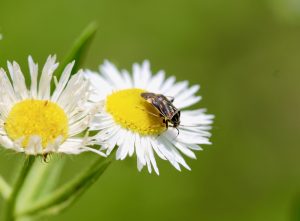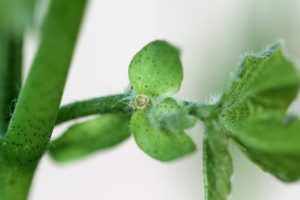My name is Seth Dorman, and I’m a graduate student with Dr. Sally Taylor in the Virginia Tech Department of Entomology. My research focuses on tarnished plant bug (Lygus lineolaris) management and distribution in Virginia cotton. In recent weeks, large numbers of tarnished plant bug have been active throughout southeastern Virginia in fallow fields and ditch banks with an abundance of flowering, weedy hosts as well as in corn. Plant bugs have begun migrating into some early-planted cotton fields and were observed in cotton fields in Suffolk and Southampton counties last week.
Tarnished plant bug may move from preferred alternative hosts into cotton fields as flowering weeds senesce, and cotton plants begin to develop small, pinhead squares and subsequent flowers. Feeding during early squaring can cause plants to abort squares. Feeding on larger squares and small bolls may cause anthers in flowers to turn brown (“dirty bloom”), and small bolls to shed. Sustained feeding by tarnished plant bug from first square to early bloom can delay maturity and result in substantial losses. Scouting cotton fields once or twice a week is highly recommended after squares become visible on plants. The best indirect method for sampling plant bug is estimating square retention. Square retention can be measured by calculating the percentage of squares in the top two or three nodes of 25 randomly selected plants in a given field. If square retention drops below 80%, direct sampling for plant bugs with a sweep net is recommended. For sweep net sampling, conduct a minimum of eight 25-sweep samples randomly throughout your cotton field. We recommend using Admire Pro or other neonicotinoid products until bloom. Adult plant bugs can reinfest quickly following applications. Use restraint when treating early in the season when plants have time to compensate for injury.
More updates on plant bug activity throughout Virginia’s cotton regions will be posted soon!


